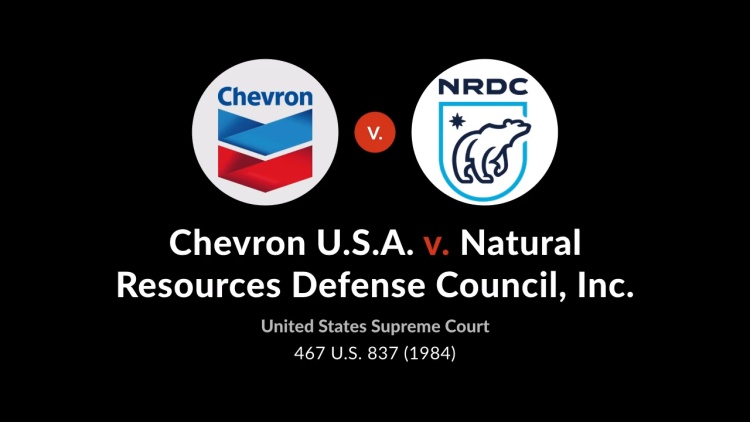Chevron v. NRDC Case Overview: Chevron Vs Nrdc Overturned

Chevron v. NRDC is a landmark environmental law case decided by the Supreme Court of the United States in 1984. The case involved a dispute between Chevron U.S.A., Inc. (Chevron) and the Natural Resources Defense Council (NRDC) over the Environmental Protection Agency’s (EPA) interpretation of the Clean Air Act.
Chevron vs nrdc overturned –
In 1977, the EPA issued regulations requiring states to adopt plans to reduce air pollution from stationary sources. Chevron challenged the regulations, arguing that they were not authorized by the Clean Air Act. The NRDC intervened in the case, arguing that the regulations were necessary to protect public health and the environment.
Key Events in the Case
- 1977: EPA issues regulations requiring states to adopt plans to reduce air pollution from stationary sources.
- 1978: Chevron challenges the regulations, arguing that they are not authorized by the Clean Air Act.
- 1979: NRDC intervenes in the case, arguing that the regulations are necessary to protect public health and the environment.
- 1984: Supreme Court rules in favor of Chevron, holding that courts must defer to the EPA’s interpretation of the Clean Air Act.
Arguments Presented by the Parties
Chevron argued that the Clean Air Act did not authorize the EPA to issue the regulations in question. The NRDC argued that the regulations were necessary to protect public health and the environment and that the EPA had the authority to issue them under the Clean Air Act.
Significance of the Supreme Court Ruling

The Supreme Court’s decision in Chevron v. NRDC had a profound impact on Chevron deference, the role of courts in interpreting environmental regulations, and future environmental litigation.
Impact on Chevron Deference
The Court’s ruling strengthened Chevron deference, which gives agencies broad authority to interpret their own regulations. The Court held that courts must defer to an agency’s interpretation of its own regulations unless the interpretation is “arbitrary, capricious, or manifestly contrary to the statute.”
Role of Courts in Interpreting Environmental Regulations
The ruling also clarified the role of courts in interpreting environmental regulations. The Court held that courts should give “great weight” to an agency’s interpretation of its own regulations, even if the court disagrees with the interpretation. However, the Court also held that courts can still review an agency’s interpretation to ensure that it is not arbitrary, capricious, or manifestly contrary to the statute.
Implications for Future Environmental Litigation
The Supreme Court’s ruling in Chevron v. NRDC has significant implications for future environmental litigation. The ruling makes it more difficult for environmental groups to challenge agency interpretations of environmental regulations. However, the ruling also provides some guidance to courts on how to review agency interpretations.
Chevron v. NRDC in Practice

The Chevron deference doctrine has been applied in numerous subsequent cases, shaping the interpretation of environmental laws and regulations. In the seminal case of Massachusetts v. EPA (2007), the Supreme Court applied Chevron deference to uphold the EPA’s interpretation of the Clean Air Act, finding that the agency’s determination that greenhouse gases are air pollutants was reasonable and supported by the statute’s text.
Challenges and Controversies, Chevron vs nrdc overturned
The application of Chevron deference has not been without challenges and controversies. Critics argue that the doctrine gives excessive power to administrative agencies, allowing them to effectively make law without the proper accountability and oversight. Additionally, some contend that Chevron deference undermines the role of the judiciary in interpreting statutes, potentially leading to inconsistent and arbitrary outcomes.
Influence on Environmental Policy
Chevron deference has significantly influenced environmental policy and decision-making. By giving deference to agency interpretations of environmental statutes, courts have granted agencies broad discretion in implementing and enforcing these laws. This has allowed agencies to adapt regulations to evolving scientific understanding and address emerging environmental challenges.